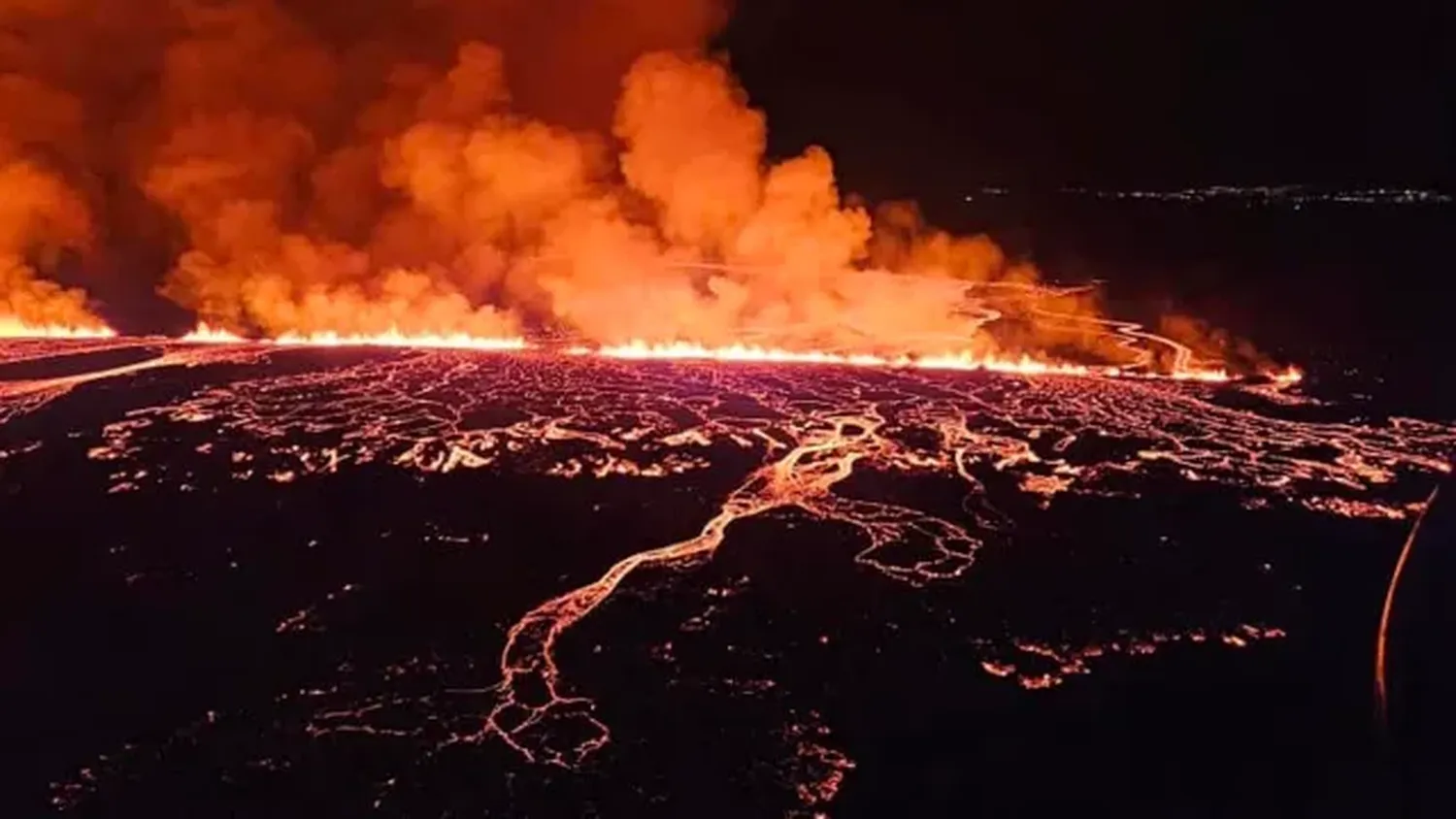Volcano Eruption
Icelandic Volcano Erupts, Triggers State of Emergency
In a dramatic turn of events, Iceland has declared a state of emergency following the eruption of a volcano on the Reykjanes Peninsula, marking the largest volcanic event the country has seen in three years. The eruption has prompted the evacuation of the Blue Lagoon geothermal spa and the nearby town of Grindavík, home to approximately 4,000 residents.
The volcanic activity began with a fissure eruption, spewing lava and smoke into the air, and creating a stark visual contrast against the night sky. The fissure, estimated to be nearly 2.9 kilometers long, has led to the flow of lava in the direction of protective barriers set up around the Svartsengi region and towards Grindavík.
The Icelandic Meteorological Office had issued warnings of increased seismic activity in the area, with thousands of earthquakes recorded since late October, indicating the movement of magma underground. Despite the evacuation of Grindavík and the temporary closure of the Blue Lagoon, officials have reassured that there are no disruptions to flights to and from Iceland, and international flight corridors remain open.
The eruption has unfolded north of the watershed, meaning the lava does not flow towards Grindavík, offering some relief to the town's residents. However, the situation remains fluid, with geologists warning that the direction of lava flow can change depending on the topography and new fissure openings.
The recent volcanic activity is not expected to have the same impact on air travel as the 2010 Eyjafjallajökull eruption, which caused extensive ash clouds and disrupted flights across Europe. The current eruption is effusive in nature, primarily releasing steam and gas rather than ash.
Residents of Grindavík have been living in a state of uncertainty since the initial evacuation in November, with some expressing disbelief at the surreal nature of the events. The town has been allowed back intermittently to check on homes, but the threat of further eruptions looms.
Iceland, known for its seismic activity, sits atop the Mid-Atlantic Ridge, where the Eurasian and North American tectonic plates are moving apart. This geological setting makes the country one of the most active volcanic regions in the world.
Authorities continue to monitor the situation closely, with the Civil Protection Agency coordinating the emergency response. The Icelandic Meteorological Office and other experts are providing regular updates on the eruption's progress and potential risks to the public and infrastructure.
As the situation develops, the focus remains on ensuring the safety of residents and minimizing the impact on critical infrastructure. The resilience of the Icelandic people and their preparedness for volcanic events are being put to test once again in face of this natural phenomenon.

